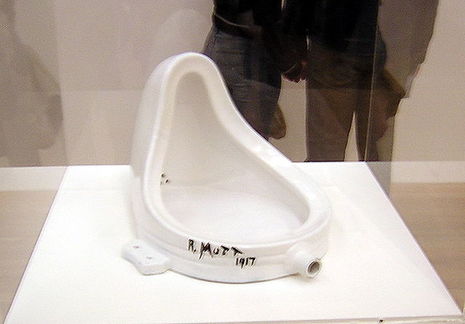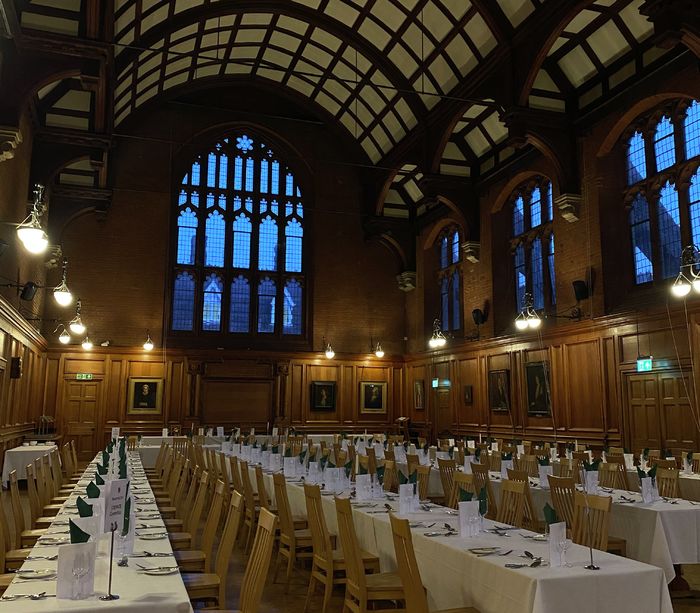‘I just don’t get it’: understanding modernism through ‘absurd’ art
After overhearing a few grumpy visitors to the Tate Modern, Sasha Brealey sets out to prove that the strangeness of modernist art is vital to its meaning

A trip to the Tate Modern on a hot summer day will quickly reveal a relatively unflattering view of modern art. The frowns of baffled tourists pointing at the ‘messy’ pictures, commenting how ‘A child could do that!’, exhibit the scorn and scepticism harboured against the modernist movement. Duchamp’s Fountain (a urinal signed with a pseudonym of the artist’s name) epitomises the sceptical viewer’s opinion of modern art – that it’s full of crap. But I would argue that this art – though it can seem pretentious, elitist and frankly absurd – provides a gateway to understanding the meaning of modernism. Its impenetrability can become its point.
These new expressions had to be difficult to reflect the difficulty of their surrounding world
Modernism as an artistic movement is notoriously difficult to understand. Its distortions, abstractions and apparent nonsensicality almost encourage criticism from the dubious viewer – but this impenetrability is a defining feature of the modernist personality. A glance at Picasso’s Weeping Woman, for instance, is at first disorientating and even irksome. With its fragmentary form and chaotic use of colour and composition, it challenges classical artistic representation and rejects realism. But its abstracted features that we are so quick to reject are actually the most poignant giveaways of its context and meaning. I hear one gallery-goer condemn the painting as confusing and difficult – and while they definitely intend this as a burn against Picasso, they have actually just identified two main assets of modernism. Someone else criticises how the face is fragmented, unconsciously identifying another characteristic of the modernist movement – the reconceptualisation of form. Even the person saying they ‘just don’t get it’ has a valid point. And while I can't spin anything out of the man degrading it to a ‘colourful doodle’ I think my point is evident – that the personality of the period lies in the aesthetics of the art.
T.S. Eliot wrote in 1921 that ‘Poets in our civilisation must be difficult’ – and while his statement really is just quite annoying, I hate to admit that it makes sense alongside Picasso’s abstracted masterpiece. In order to shape and represent the unsettling madness of modern existence, artists of the modernist movement sought out and developed new forms of creative expression – these new expressions had to be difficult to reflect the difficulty of their surrounding world. Don’t get me wrong – I’m not supporting the idea of art being difficult for the sake of gatekeeping it in some elitist sphere. That really would be pretentious. I’m just saying that on one level, this ‘difficulty’ was a conscious reflection of the difficulty of twentieth-century life.
Wrapping your head around this ‘difficulty’ through literature alone is doable but difficult – the same applies to music. Visual art, however, is different. It hits the viewer in the face with one overwhelming experience. Its meaning is displayed directly over its surface. In a painting, the modernist context is made immediately accessible – what you require to understand this movement is not an art history degree, but a pair of eyes.
Look at what you see, and allow the art to tell you what it is trying to say
As I wander over to more modernist pieces – László Moholy-Nagy’s K VII, Georges Braque’s Bottle and Fishes, Salvador Dalí’s Metamorphosis of Narcissus – it becomes apparent that the aesthetic features of these artworks are the key concepts of the modernist movement. The cubist structures and unreal compositions visually represent the confusion and fragmentation of modern experience. And such fragmentation translates across other modes of art. Joyce and Woolf’s stream-of-consciousness method is a literary interpretation of this aesthetic technique. Stream-of-consciousness rejects orderly form and structure, depicting thought exactly as it comes – no matter how unwieldy this may be. But reading Joyce and Woolf is no easy feat – anyone who said Woolf’s Mrs Dalloway didn’t give them at least a little bit of a headache is lying to you. It is easier to engage with the material of modernism when it is presented visually, rather than jammed into an already complicated literary narrative. And this method of grappling with difficult cultural concepts by analysing visual art doesn’t just apply to modernism. Hans Holbein’s Ambassadors (1533) provides an insight into the interests and motivations of the Renaissance period. With its elegant composition and elaborate display of scientific and musical instruments, it reveals this period's emphasis on knowledge and power, and its slanted skull implies an interrogation of perspective and an unsettling awareness of death. As with modernism, the tiniest details in the painting hint at far huger concepts.
Art shows us ideas in their most accessible form. Every aspect of aesthetics – from form to colours to images – is a vital cultural giveaway. Look at what you see, and allow the art to tell you what it is trying to say – allow the aesthetics to enlighten the mind! Movements like modernism are difficult, but art is a handy tool for unlocking their secrets. And let’s be real – it takes less time to look up Picasso’s Weeping Woman than it does to read Joyce’s Ulysses.
 Comment / Cambridge is right to scrap its state school target1 May 2024
Comment / Cambridge is right to scrap its state school target1 May 2024 News / Academics call for Cambridge to drop investigation into ‘race realist’ fellow2 May 2024
News / Academics call for Cambridge to drop investigation into ‘race realist’ fellow2 May 2024 News / Gender attainment gap to be excluded from Cambridge access report3 May 2024
News / Gender attainment gap to be excluded from Cambridge access report3 May 2024 News / Cambridge postgrad re-elected as City councillor4 May 2024
News / Cambridge postgrad re-elected as City councillor4 May 2024 Comment / Accepting black people into Cambridge is not an act of discrimination3 May 2024
Comment / Accepting black people into Cambridge is not an act of discrimination3 May 2024





